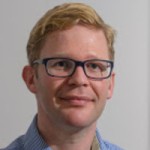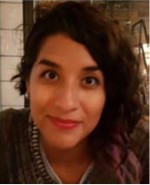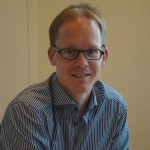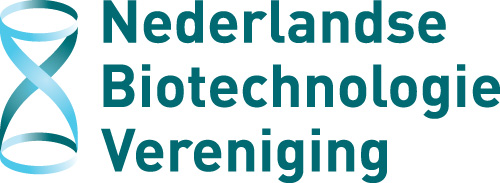Programma van Computers & Bioprocess Development
| Op woensdag 14 februari: | |
| 18:00 - 19:00 | Registration, Coffee & Sandwiches |
| 19:00 - 19:05 | Opening by Session Chairs |
| 19:05 - 19:35 | Simulation of Expanded Bed Adsorption using Multiphase Computational Fluid Dynamics |
| 19:35 - 20:00 | Computer-Aided Process Design for Biologics Production |
| 20:00 - 20:30 | Break |
| 20:30 - 21:00 | Optimization Models and Decision Support Tools to Reduce Costs in Biomanufacturing |
| 21:00 - 21:30 | Cost of goods modeling for viral vaccine development |
| 21:30 - 22:30 | Drinks |
-
Van 19:05 tot 19:35
Simulation of Expanded Bed Adsorption using Multiphase Computational Fluid Dynamics
Victor Koppejan, Delft University of Technology
 The purification of high value products such proteins typically involves a cascade of unit operations such as membrane filtration and chromatography columns. Expanded bed adsorption creates an opportunity for process intensification by combining cell removal with a product capture and initial purification step. By mildly fluidizing a bed of adsorbent particles, the inter-particle void space is increased, which allows cells and other particulate matter to move through the bed in a relatively unhindered manner. The bed is stabilized through the use of a particle size and density distribution, which cause bigger/ heavier particles to remain in the bottom while smaller/lighter particles reside higher up in the column. We developed a computer model using multiphase computational fluid dynamics (CFD) for the fluid motion and a discrete element model (DEM) for the particle motion. This model allows the a priori prediction of particle and fluid behavior in an EBA column based on material properties and operational parameters such as fluid velocity. This work will present the results of the CFD-DEM simulations and compare them with experimental data. It will be demonstrated how this approach can be used to link the mesoscopic behavior of the particles to macroscopic phenomena such as bed expansion, fluid phase dispersion and velocity. Based on the insights obtained from the simulations, resin properties such as density and size distribution can optimized to ensure bed stability and separation performance.
The purification of high value products such proteins typically involves a cascade of unit operations such as membrane filtration and chromatography columns. Expanded bed adsorption creates an opportunity for process intensification by combining cell removal with a product capture and initial purification step. By mildly fluidizing a bed of adsorbent particles, the inter-particle void space is increased, which allows cells and other particulate matter to move through the bed in a relatively unhindered manner. The bed is stabilized through the use of a particle size and density distribution, which cause bigger/ heavier particles to remain in the bottom while smaller/lighter particles reside higher up in the column. We developed a computer model using multiphase computational fluid dynamics (CFD) for the fluid motion and a discrete element model (DEM) for the particle motion. This model allows the a priori prediction of particle and fluid behavior in an EBA column based on material properties and operational parameters such as fluid velocity. This work will present the results of the CFD-DEM simulations and compare them with experimental data. It will be demonstrated how this approach can be used to link the mesoscopic behavior of the particles to macroscopic phenomena such as bed expansion, fluid phase dispersion and velocity. Based on the insights obtained from the simulations, resin properties such as density and size distribution can optimized to ensure bed stability and separation performance.http://onlinelibrary.wiley.com/doi/10.1002/jctb.5595/full (It should be available as open source soon, but for questions you can always contact Victor Koppejan: V.W.Koppejan@tudelft.nl)
-
Van 19:35 tot 20:00
Computer-Aided Process Design for Biologics Production
Maria del Pilar Ramirez Vazquez, Janssen Biologics
 In the pharmaceutical industry the fast transfer of technology between different sites is needed to ensure the timely production of drug-product material needed for clinical trials. In the technology transfer process, the receiving party must perform a resource assessment in terms of equipment, production capacity, materials, time and know-how. This is a laborious process and the time constraints of the projects might lead to the sub-optimal use of resources. A computer-aided model was developed to perform an optimized resource assessment, in terms of manufacturing costs and processing time, by modifying the process topology and equipment selection. The model couples the process simulation tools of SuperPro Designer® and a multi-objective optimization routine in Matlab® through the COM interface by means of Visual Basic for Applications. The usage of the model has the potential of reducing the manufacturing costs of the clinical material and it has shown that coupling Matlab® with SuperPro Designer® is an effective way of distributing tasks amongst specialized softwares, enhancing their own capabilities.
In the pharmaceutical industry the fast transfer of technology between different sites is needed to ensure the timely production of drug-product material needed for clinical trials. In the technology transfer process, the receiving party must perform a resource assessment in terms of equipment, production capacity, materials, time and know-how. This is a laborious process and the time constraints of the projects might lead to the sub-optimal use of resources. A computer-aided model was developed to perform an optimized resource assessment, in terms of manufacturing costs and processing time, by modifying the process topology and equipment selection. The model couples the process simulation tools of SuperPro Designer® and a multi-objective optimization routine in Matlab® through the COM interface by means of Visual Basic for Applications. The usage of the model has the potential of reducing the manufacturing costs of the clinical material and it has shown that coupling Matlab® with SuperPro Designer® is an effective way of distributing tasks amongst specialized softwares, enhancing their own capabilities.Documenten
Deze activiteit heeft één gekoppeld document: Pilar Ramirez - NBV Seminar presentation to share.pdf.
-
Van 20:30 tot 21:00
Optimization Models and Decision Support Tools to Reduce Costs in Biomanufacturing
Dr. Tugce Martagan, Technical University of Eindhoven
 Eindhoven University of Technology and the University of Wisconsin-Madison have been working on a research funded by the European Commission and the National Science Foundation to improve efficiencies, reduce timelines, and lower costs in biomanufacturing operations. We will first provide an overview of the challenges specific to biological production, and present the need for decision support tools that combine biological sciences and manufacturing systems theory. Then, we will present an overview of various models and tools on (1) capacity analysis and bottlenecking, (2) lead time mapping and analysis, (3) optimization models to analyze trade-offs related to yield, purity and costs in downstream processes.
Eindhoven University of Technology and the University of Wisconsin-Madison have been working on a research funded by the European Commission and the National Science Foundation to improve efficiencies, reduce timelines, and lower costs in biomanufacturing operations. We will first provide an overview of the challenges specific to biological production, and present the need for decision support tools that combine biological sciences and manufacturing systems theory. Then, we will present an overview of various models and tools on (1) capacity analysis and bottlenecking, (2) lead time mapping and analysis, (3) optimization models to analyze trade-offs related to yield, purity and costs in downstream processes. -
Van 21:00 tot 21:30
Cost of goods modeling for viral vaccine development
Wiebe van Vuure, J&J Vaccines
 Janssen Vaccines uses Cost of Goods (CoG) modeling to guide process development for our Adenovirus-based vaccine Platform (AdVac). In the past years, volumetric yield of the AdVac drug substance process increased thirty-fold, enabling significantly reduced facility footprint and CoG. Janssen recently built a facility for future commercial production, which generated input for improved CoG model accuracy. The model provides valuable insight in the cost drivers of the drug substance process
Janssen Vaccines uses Cost of Goods (CoG) modeling to guide process development for our Adenovirus-based vaccine Platform (AdVac). In the past years, volumetric yield of the AdVac drug substance process increased thirty-fold, enabling significantly reduced facility footprint and CoG. Janssen recently built a facility for future commercial production, which generated input for improved CoG model accuracy. The model provides valuable insight in the cost drivers of the drug substance process

